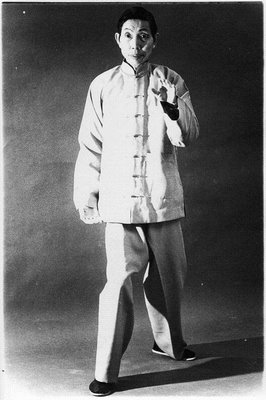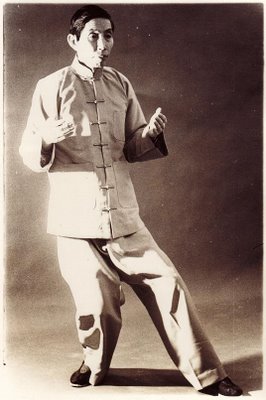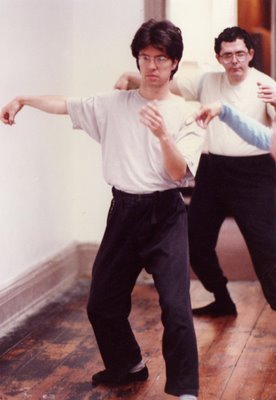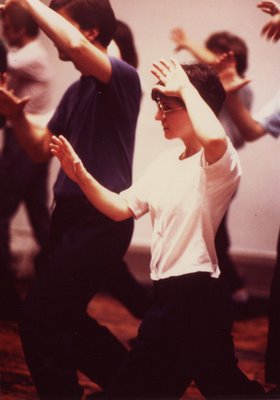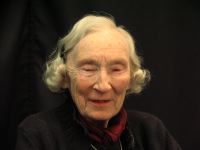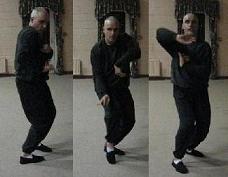Each loop of the figure of eight should be accompanied by an opening and swallowing in the heart. Really this action of the heart should generate each loop, but to start with we do figures of eight with the arms and waist, and later the hands, feet and eyes, and later still each toe, balls of feet, heels, insteps, ankles, calves, knees, groin, coccyx, sacrum, perineum, hips, belly, kidneys, sternum, heart, scapulae, thymus, clavicles, sternal notch, shoulders, neck, Adam's apple, head, back-brain, mid-brain, fore-brain, temples, eyebrows, ears, nostrils, mouth, chin, jaw, tongue, back of throat, crown, armpits, elbows, forearms, wrists, Tiger's mouths, heels of palms, middle of palms, fingers, tips of fingers, etc. to train the heart to open and get involved. The individual character of each place is felt and dwelt upon. Each involves and requires a slightly different action in the heart, and clearly such practice will develop a richness and depth to the heart as well as awakening these parts of the body and developing an energy component to each. The more parts we can acknowledge and bring into some independent and dependent play – shake loose – the more of the correct sort of energy we will contain – the energy of connectedness – the real dance of vitality.
Reminds me again of my teacher's father who does something similar - but far less selfishly. Before he goes to bed each night he prays. His prayer involves bringing to mind, in turn, each person he has ever known, and re-establishing, in his heart at least, connexion. It takes so long now he has to do half one night and half the next. I don't think he's ever had a casual connexion in his life – one that he has subsequently forgotten. It's all about honouring the connexion and, with all your heart, wishing them well. Many of the Irish are like this – you feel when you meet for the first time that it's permanent – for life.



 Yang Cheng-fu's eldest son.
Yang Cheng-fu's eldest son.

